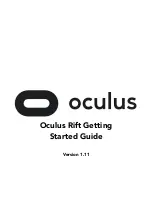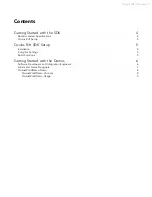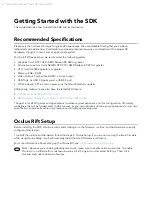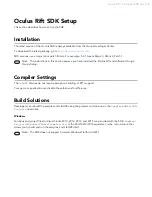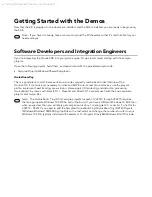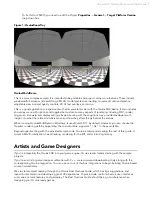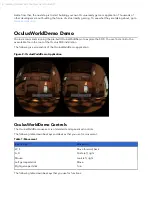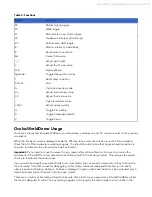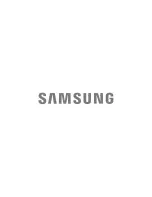
6 | Getting Started with the Demos | Oculus Rift
Getting Started with the Demos
Now that the Rift is plugged in, the drivers are installed, and the SDK is installed, you are ready to begin using
the SDK.
Note: If you haven’t already, take a moment to adjust the Rift headset so that it’s comfortable for your
head and eyes.
Software Developers and Integration Engineers
If you’re integrating the Oculus SDK into your game engine, Oculus recommend starting with the sample
projects.
Open the following projects, build them, and experiment with the provided sample code:
• Samples/Projects/Windows/VSxxxx/Samples.sln
OculusRoomTiny
This is a good place to start, because its source code compactly combines all critical features of the
Oculus SDK. It contains logic necessary to initialize LibOVR core, access Oculus devices, use the player’s
profile, implement head-tracking, sensor fusion, stereoscopic 3D rendering, and distortion processing.
OculusRoomTiny comes with Direct3D 11, OpenGL and Direct3D 12 variants each with their own separate
projects and source files.
Note: The Oculus Room Tiny (DX12) sample projects for each of VS2010 through VS2015 requires
that an appropriate Windows 10 SDK be set for the build. If you have a different Windows 10 SDK than
what is expected, then you will likely get compile errors about 'missing dx12.h' or similar. To fix this for
VS2010 - VS2013, you need to edit the Samples\OculusRoomTiny\OculusRoomTiny (DX12)\Projects
\Windows\Windows10SDKPaths.props file with a text editor and change the numbers to refer to your
Windows 10 SDK, typically installed with headers at C:>Program Files (x86)\Windows Kits\10\Include.

